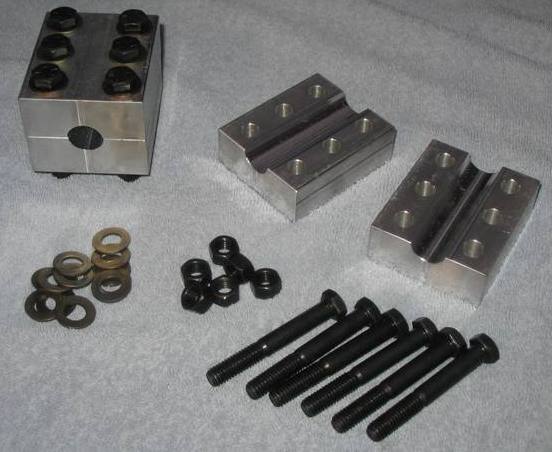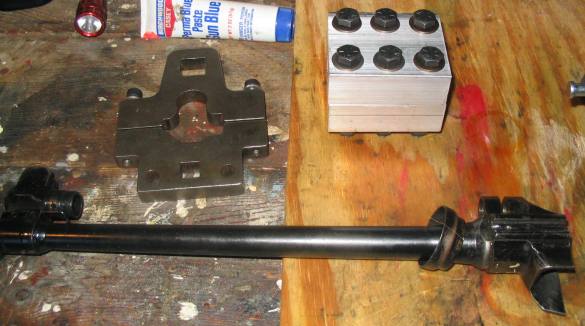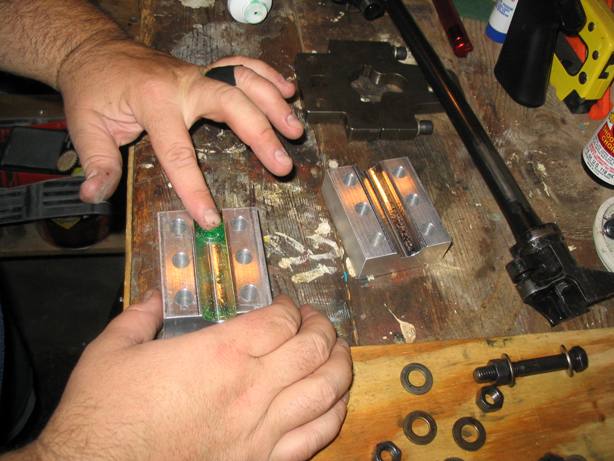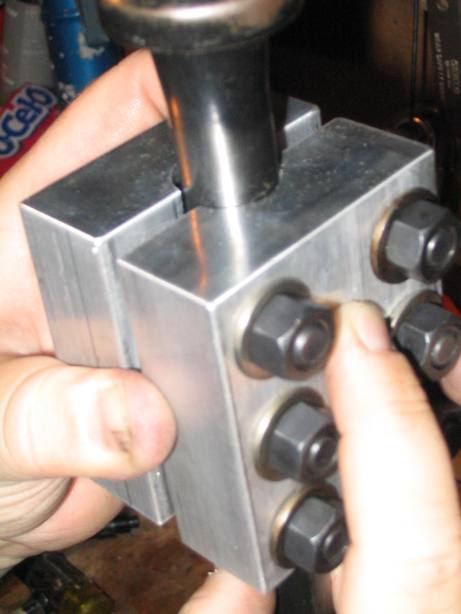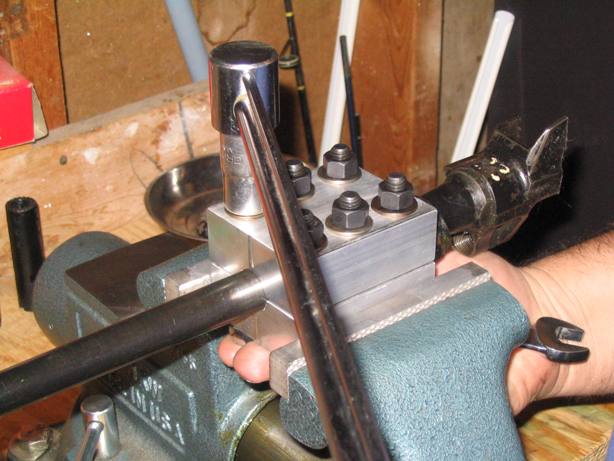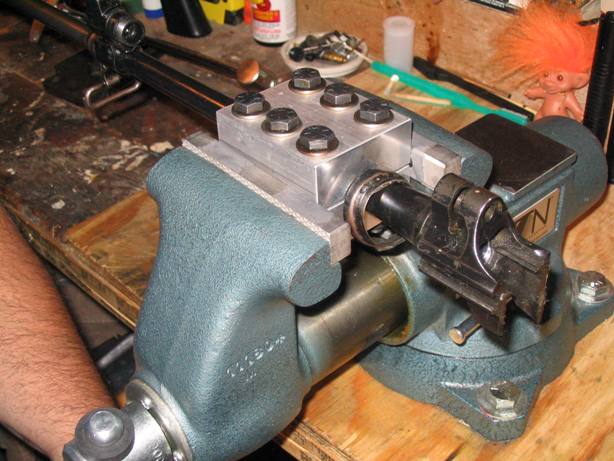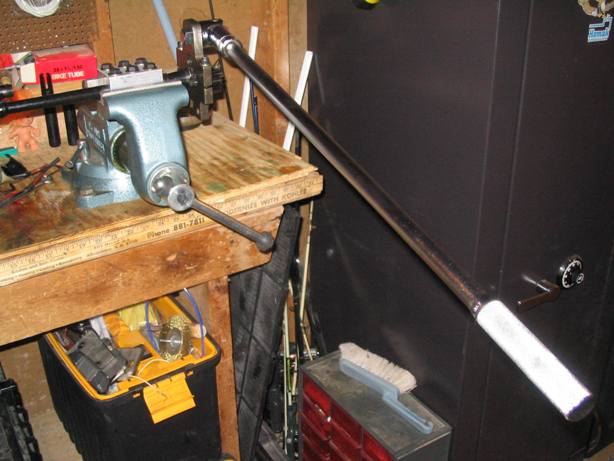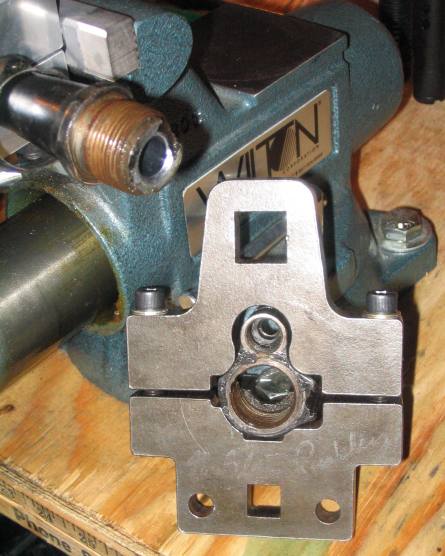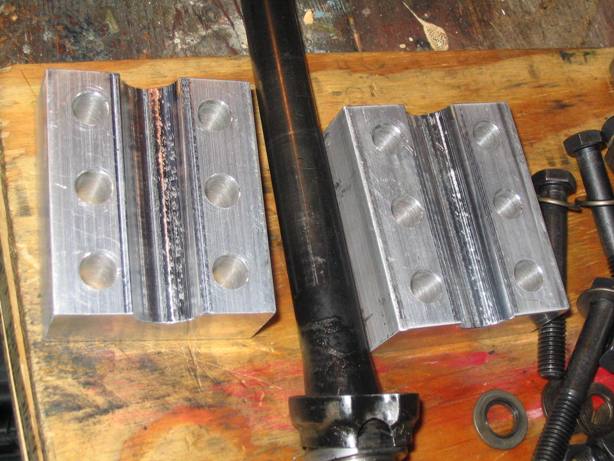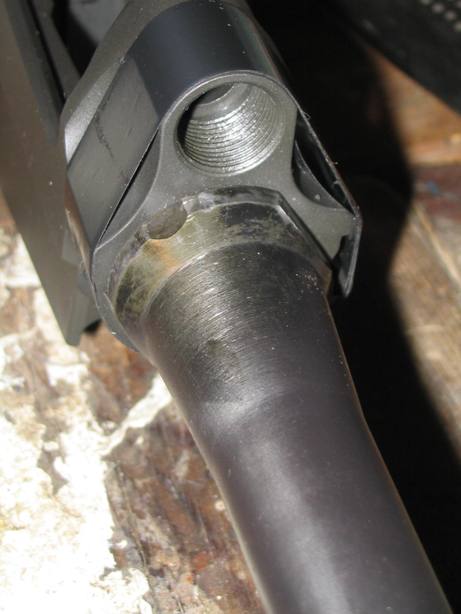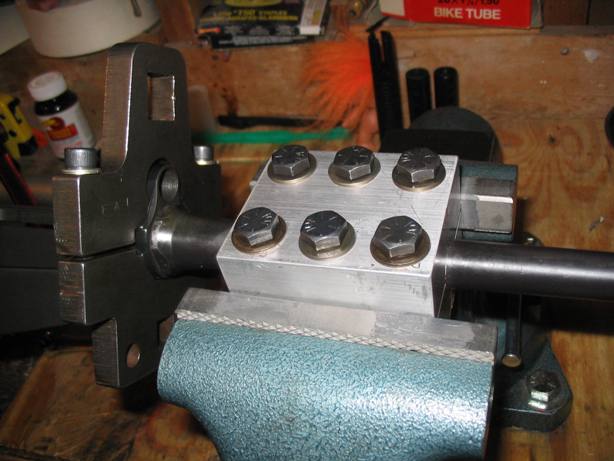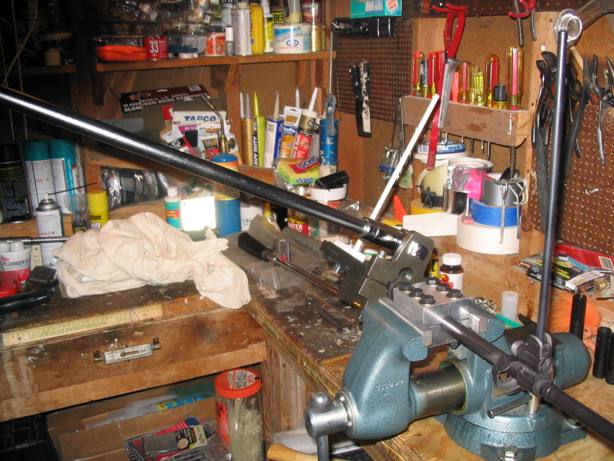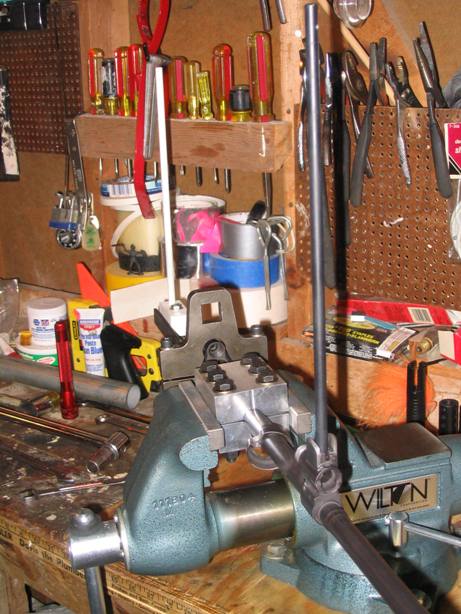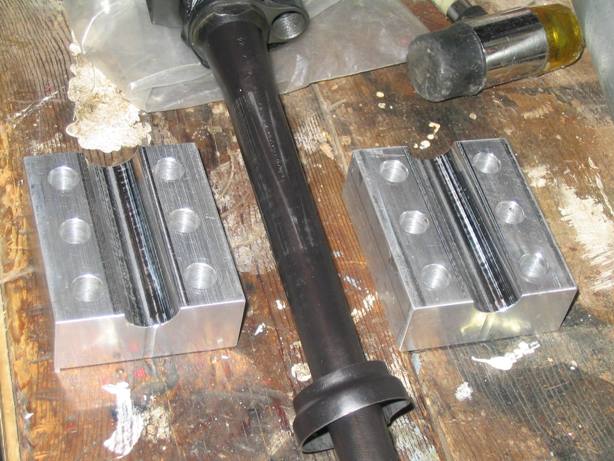The barrel vise consists of a pair of aluminum barrel blocks that are cut to match the barrel profile of both metric and inch FAL barrels. They are made from 6061-T6 aluminum bar stock. Incorporated into the blocks are six 3/8-16 bolts that, when torqued, provide ample clamping force on the barrel to prevent any rotation during barrel stub removal and barrel installation/removal from the receiver. The bolts are high-quality grade 8 fasteners, not cheap stuff from the local hardware store. Of course, use of this barrel vise requires a large, quality vise. Don’t try to use it with a cheap bench vise, because you might end up breaking something – and it will probably be the cheap vise. This tool can also be used held rigidly in place by other methods for those who do not have access to a good bench vise. One method would be to replace the bolts with longer ones, and bolt this vise to the end of a workbench. This would probably require backing up the workbench with some kind of reinforcement.
Note that there is a vertical mark on the end of each block that faces towards the muzzle end of the barrel.
To demonstrate how this barrel vise is used, we removed a receiver stub from a barrel and we then installed the barrel onto a new receiver.
We started with some degreaser to remove any oils or grease from the vise blocks and the barrel to assure no slipping.
The most important step to installing the vise is to match the taper of the barrel vise blocks to the taper of the barrel. This is easily done by sliding one of the blocks slowly towards the chamber end of the barrel. The point where the tapers match is easily felt. Add the second block, and then the fasteners.
Torque all of the vise fasteners. We worked up in a couple of steps to 30 ft-lbs, using a rotating pattern. These bolts are capable of going to at least 40 ft-lbf, but 30 is usually sufficient. Watch the gap between the blocks, and make sure that they remain close to parallel.
Lock the barrel vise FIRMLY into a quality bench vise. Here, we used a Wilton bench vise. Don’t worry about marring the exterior of the barrel blocks. You won’t be able to wear them out.
Next we attached a receiver wrench. (This is an older version of the model that we now sell.) Tighten both of the receiver wrenches firmly. The it was time to remove the receiver stub. Note that we used a 3/4″ drive breaker bar with plenty of leverage.
Done. Receiver stub easily removed. We did not note any slipping of the barrel.
There was a little marking of the barrel from the aluminum blocks. This is of no concern to most builders, because any marks on the barrel are covered by the handguards. Some people have been successful preventing these markts by placing card stock or paper between the barrel and the barrel blocks. Though some versions of barrel vises require rosin to increase friction, we have never required any. The small rosin bag that was purchesed for this purpose was thrown away years ago.
The next step was to install the barrel onto a new DSA receiver. Note that we were a little short of the perfect hand timing, but this proved to be no problem using these tools.
Same method that we used for the stub removal. Install the barrel vise, and clamp it firmly into the Wilton bench vise.
Ready to torque into place. Note the “Court” Timing Tool.
Barrel timed.
A few marks on the barrel paint. No damage to the barrel blocks.
These tools make gunsmithing of FAL rifles easy.

